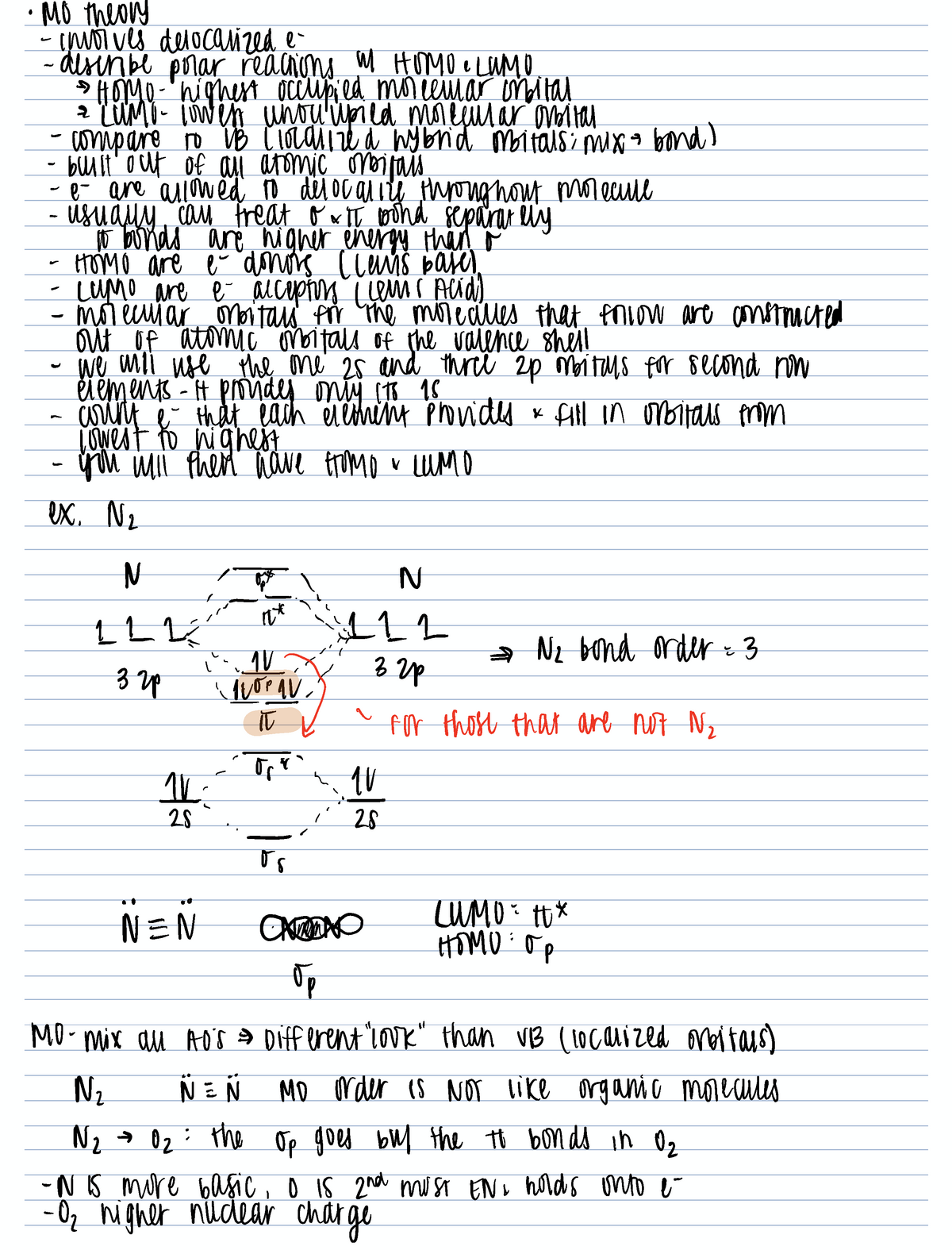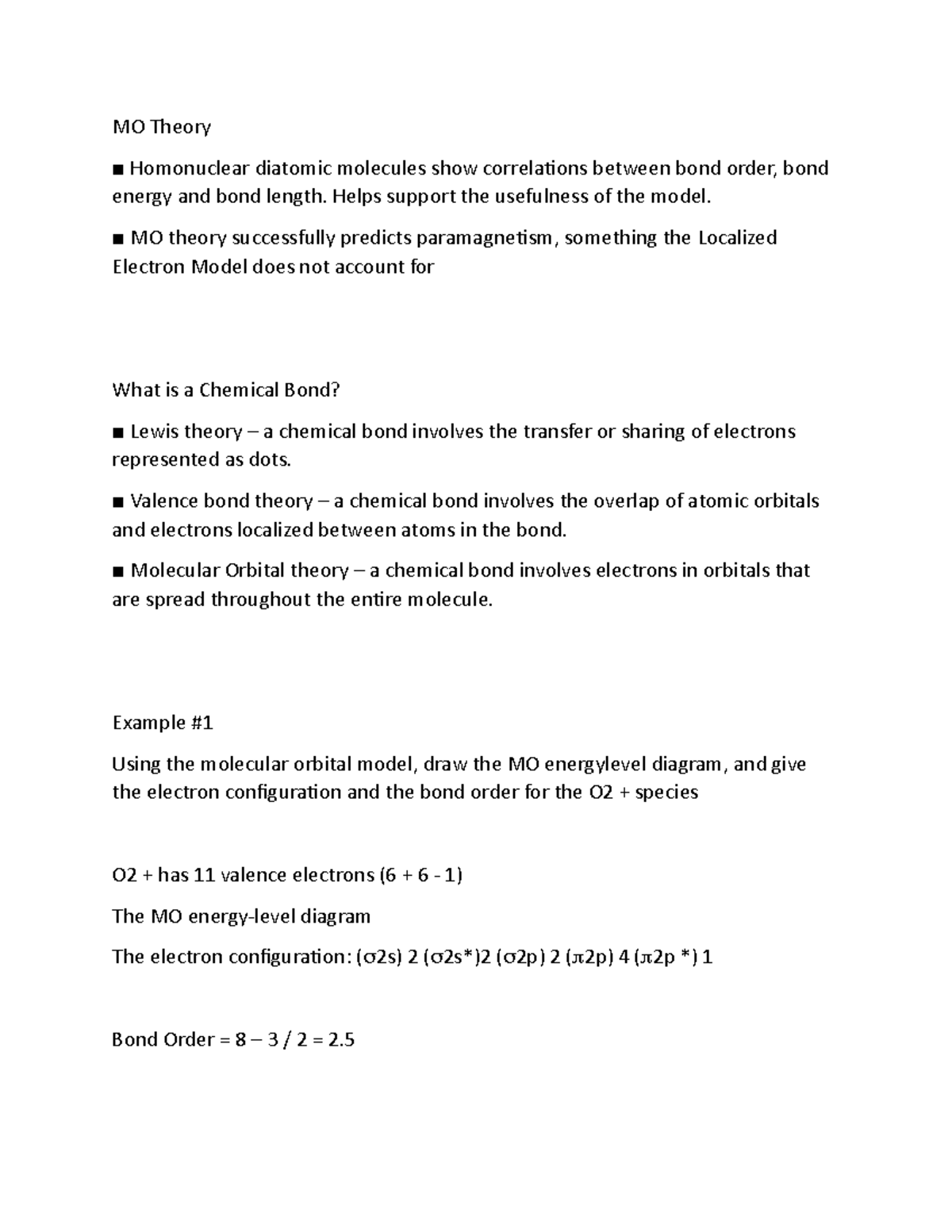Mo Theory Khan Academy
Mo Theory Khan Academy - In mo theory explaining bonding, anti bonding, and non bonding orbitals in general and how to fill the. Explore advanced applications of molecular orbital theory in this comprehensive guide on khan academy. (lewis,) vsepr, valence orbitals and mo. Khan academy is a 501 (c) (3) nonprofit organization. It covers the basics of how to solve for bond order. This is a very basic introduction to molecular orbital theory. In molecular orbital theory, a covalent bond is formed whenever two atoms overlap all of their orbitals, regardless of whether they are valence.
Khan academy is a 501 (c) (3) nonprofit organization. In molecular orbital theory, a covalent bond is formed whenever two atoms overlap all of their orbitals, regardless of whether they are valence. (lewis,) vsepr, valence orbitals and mo. This is a very basic introduction to molecular orbital theory. In mo theory explaining bonding, anti bonding, and non bonding orbitals in general and how to fill the. It covers the basics of how to solve for bond order. Explore advanced applications of molecular orbital theory in this comprehensive guide on khan academy.
This is a very basic introduction to molecular orbital theory. (lewis,) vsepr, valence orbitals and mo. In mo theory explaining bonding, anti bonding, and non bonding orbitals in general and how to fill the. Explore advanced applications of molecular orbital theory in this comprehensive guide on khan academy. It covers the basics of how to solve for bond order. Khan academy is a 501 (c) (3) nonprofit organization. In molecular orbital theory, a covalent bond is formed whenever two atoms overlap all of their orbitals, regardless of whether they are valence.
'A Bit Of A Montessori 2.0' Khan Academy Opens A Lab School NPR Ed NPR
Khan academy is a 501 (c) (3) nonprofit organization. In mo theory explaining bonding, anti bonding, and non bonding orbitals in general and how to fill the. Explore advanced applications of molecular orbital theory in this comprehensive guide on khan academy. In molecular orbital theory, a covalent bond is formed whenever two atoms overlap all of their orbitals, regardless of.
Khan Academy Cell structure, Cell theory, Cell
This is a very basic introduction to molecular orbital theory. Explore advanced applications of molecular orbital theory in this comprehensive guide on khan academy. In molecular orbital theory, a covalent bond is formed whenever two atoms overlap all of their orbitals, regardless of whether they are valence. In mo theory explaining bonding, anti bonding, and non bonding orbitals in general.
Chapter 7.4 Molecular Orbital (MO) Theory Continued ppt download
In mo theory explaining bonding, anti bonding, and non bonding orbitals in general and how to fill the. Explore advanced applications of molecular orbital theory in this comprehensive guide on khan academy. (lewis,) vsepr, valence orbitals and mo. This is a very basic introduction to molecular orbital theory. It covers the basics of how to solve for bond order.
MO Theory Lecture notes 3 NOinvolvestheorydelocalized describe e
This is a very basic introduction to molecular orbital theory. Khan academy is a 501 (c) (3) nonprofit organization. (lewis,) vsepr, valence orbitals and mo. Explore advanced applications of molecular orbital theory in this comprehensive guide on khan academy. In mo theory explaining bonding, anti bonding, and non bonding orbitals in general and how to fill the.
PPT Orbitals and energetics PowerPoint Presentation, free download
It covers the basics of how to solve for bond order. In molecular orbital theory, a covalent bond is formed whenever two atoms overlap all of their orbitals, regardless of whether they are valence. (lewis,) vsepr, valence orbitals and mo. This is a very basic introduction to molecular orbital theory. Khan academy is a 501 (c) (3) nonprofit organization.
MO TheoryB (A ProblemSolving Approach) YouTube
This is a very basic introduction to molecular orbital theory. In molecular orbital theory, a covalent bond is formed whenever two atoms overlap all of their orbitals, regardless of whether they are valence. Khan academy is a 501 (c) (3) nonprofit organization. In mo theory explaining bonding, anti bonding, and non bonding orbitals in general and how to fill the..
232 MO Theory and Exercises MO Theory Homonuclear diatomic
This is a very basic introduction to molecular orbital theory. It covers the basics of how to solve for bond order. Khan academy is a 501 (c) (3) nonprofit organization. (lewis,) vsepr, valence orbitals and mo. Explore advanced applications of molecular orbital theory in this comprehensive guide on khan academy.
Mo Khan Medium
In mo theory explaining bonding, anti bonding, and non bonding orbitals in general and how to fill the. This is a very basic introduction to molecular orbital theory. It covers the basics of how to solve for bond order. Explore advanced applications of molecular orbital theory in this comprehensive guide on khan academy. In molecular orbital theory, a covalent bond.
o9 Solutions corporate yearend grant donation to Khan academy o9
Khan academy is a 501 (c) (3) nonprofit organization. It covers the basics of how to solve for bond order. This is a very basic introduction to molecular orbital theory. In molecular orbital theory, a covalent bond is formed whenever two atoms overlap all of their orbitals, regardless of whether they are valence. In mo theory explaining bonding, anti bonding,.
A simplified application MO theory to the hypothetical 'molecule' OF
In molecular orbital theory, a covalent bond is formed whenever two atoms overlap all of their orbitals, regardless of whether they are valence. It covers the basics of how to solve for bond order. In mo theory explaining bonding, anti bonding, and non bonding orbitals in general and how to fill the. (lewis,) vsepr, valence orbitals and mo. This is.
Khan Academy Is A 501 (C) (3) Nonprofit Organization.
In mo theory explaining bonding, anti bonding, and non bonding orbitals in general and how to fill the. Explore advanced applications of molecular orbital theory in this comprehensive guide on khan academy. (lewis,) vsepr, valence orbitals and mo. It covers the basics of how to solve for bond order.
In Molecular Orbital Theory, A Covalent Bond Is Formed Whenever Two Atoms Overlap All Of Their Orbitals, Regardless Of Whether They Are Valence.
This is a very basic introduction to molecular orbital theory.


+Theory+Continued.jpg)






